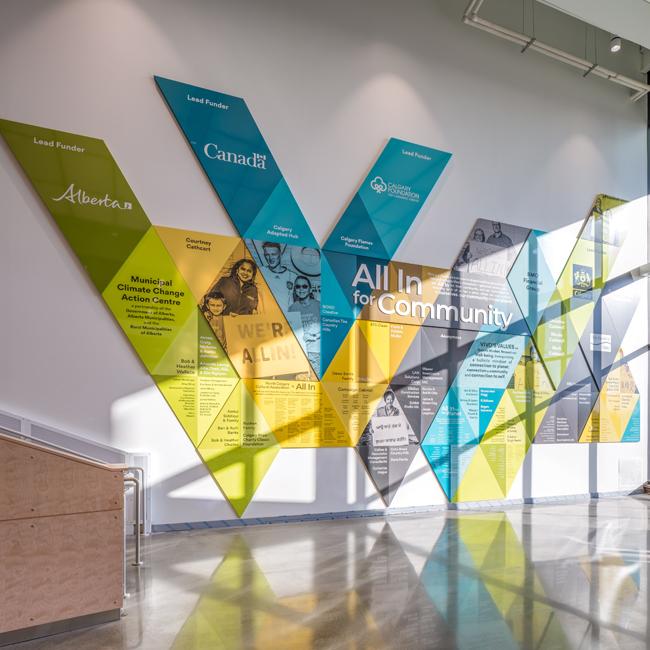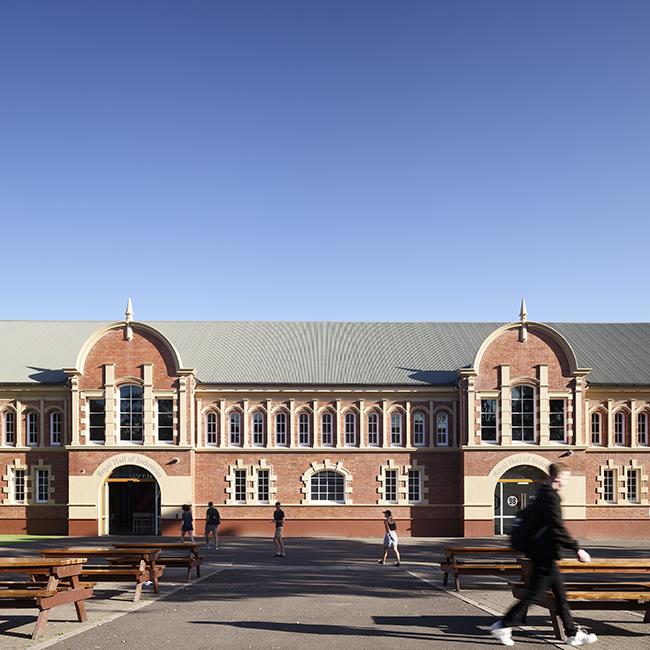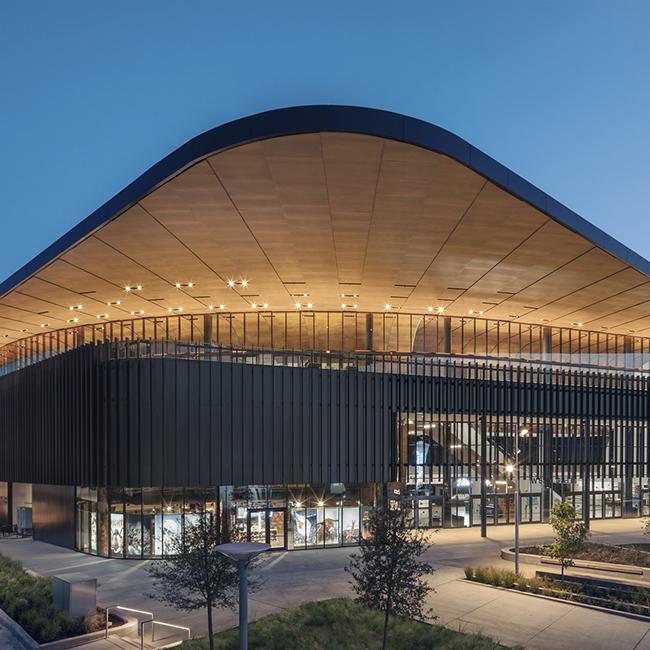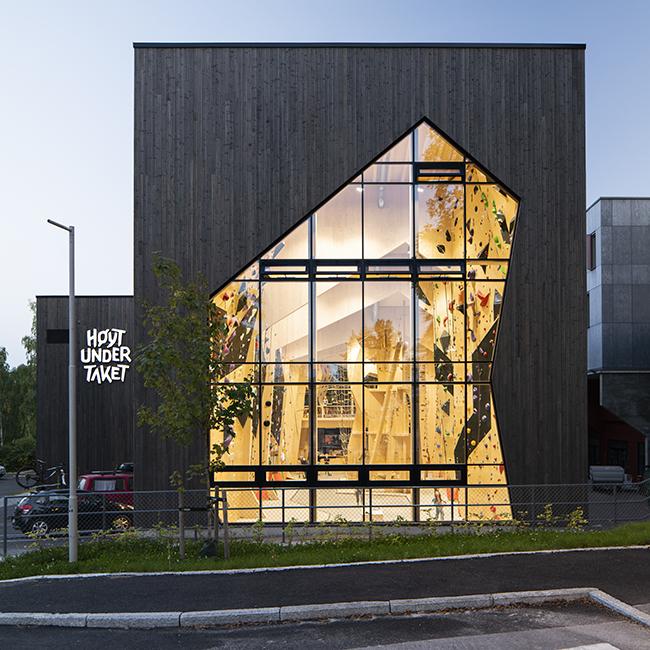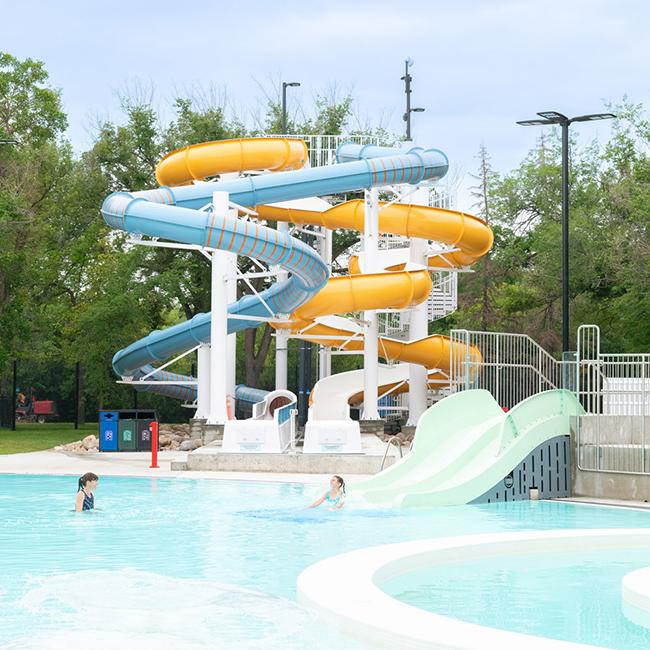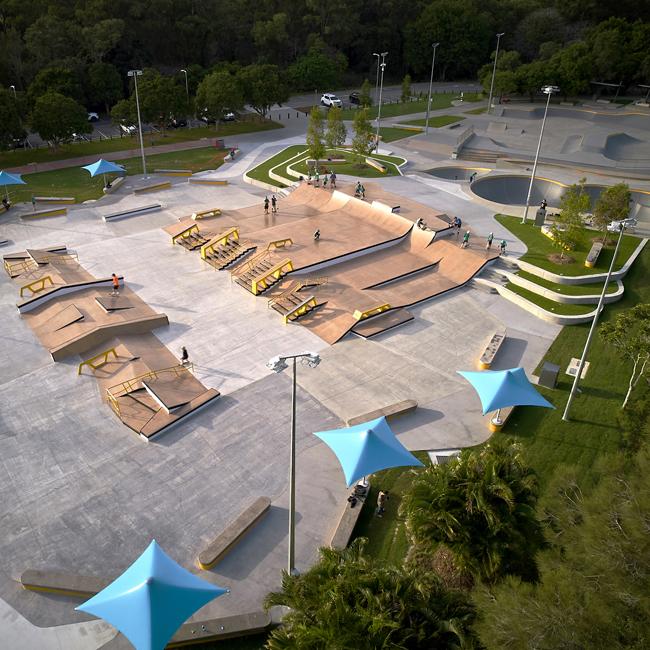New urban stadium type
published in sb 2/2020
Peregrine Sports LLC, owner of Portland Timbers and Portland Thorns FC, promoted the renovation and major expansion to Providence Park, the clubs’ 93-year-old historic home in the city’s Goose Hollow neighborhood. Designed by Allied Works, the privately-funded, 4,000-seat, three-level structure provides dramatic views of the field for individuals and groups while maintaining an open public arcade and street-level concourse along Southwest 18th Avenue.
The space once known as Multnomah Field has long been Portland’s premier venue for sporting and civic events. As the city grew, a classically inspired design was proposed in 1925 by architects Morris Whitehouse and A. E. Doyle. Since the 1970’s, the city, and its first professional soccer club, the NASL Timbers, have played a huge role in the advancement of the sport in North America. From the rebirth of the Timbers in the 2000’s, to joining the ranks of Major League Soccer in 2011, to launching the most successful women’s professional sports franchise in the U.S. in 2013, the legacy of Portland soccer continues to grow and cultivate new audiences both at home and abroad.
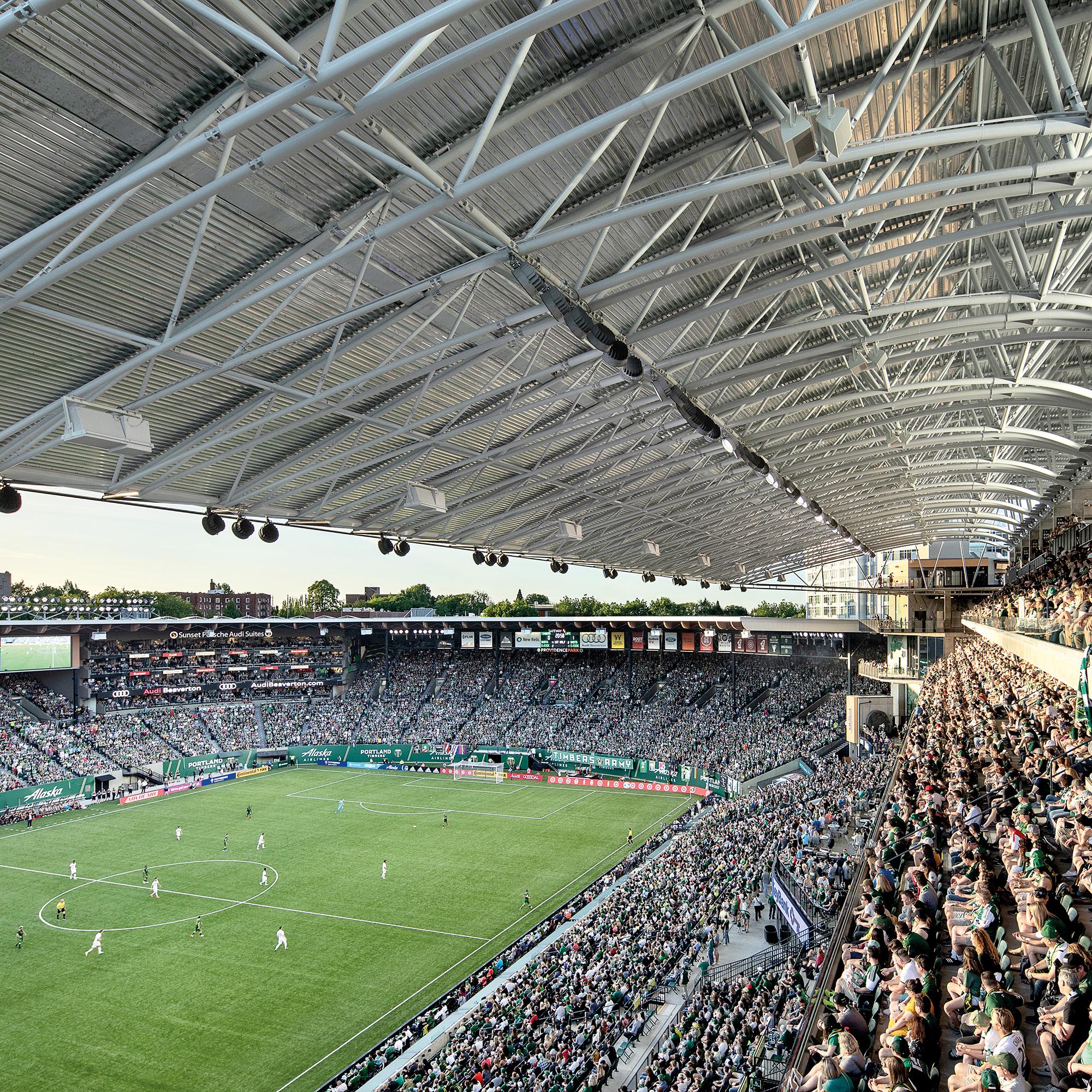
Jeremy Bittermann / JBSA
Facts
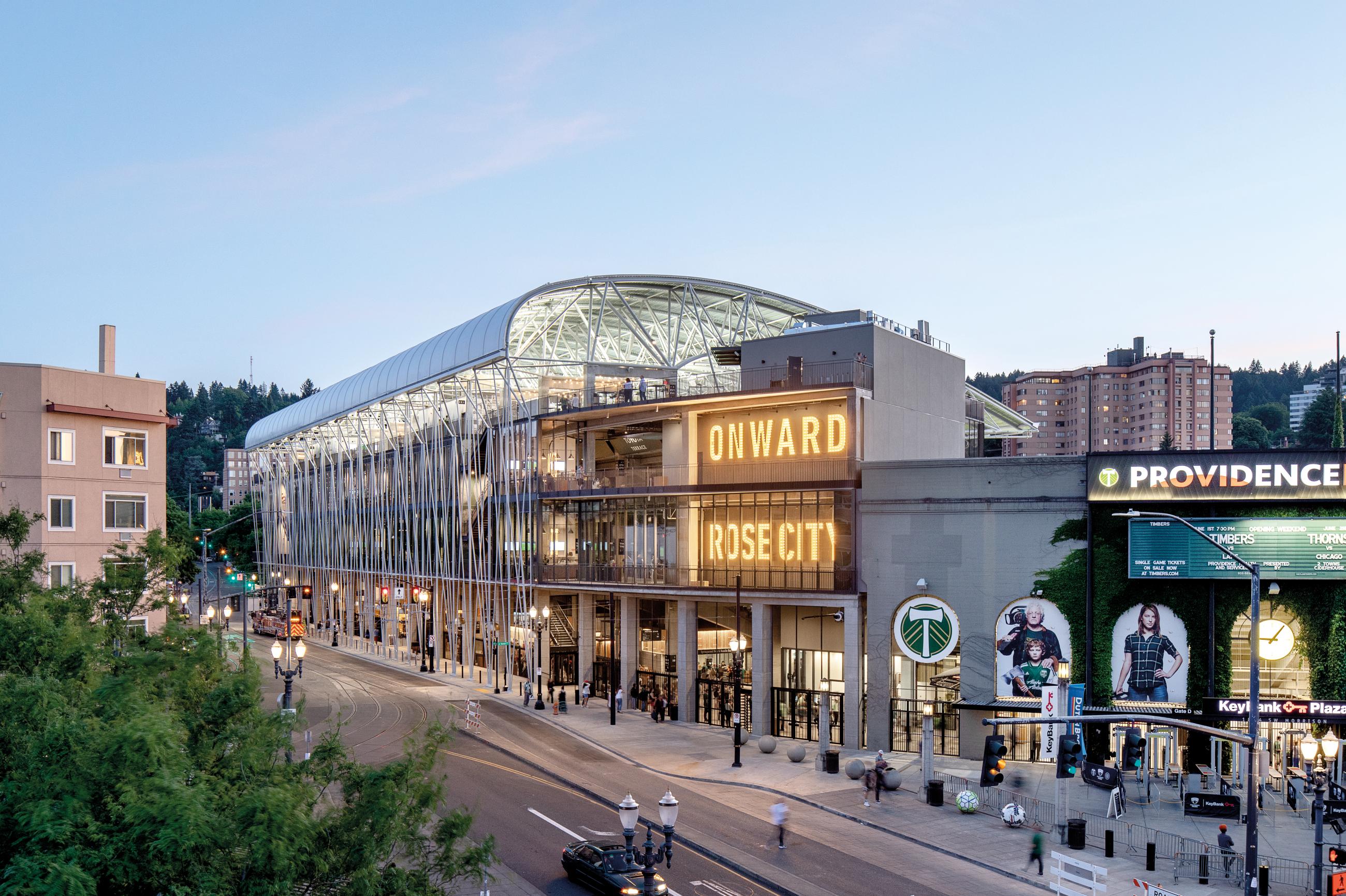
Jeremy Bittermann / JBSA
Location
Portland, Oregon, USA
Client/operator
Peregrine Sports LLC
Architect
Allied Works
US – 97205 Portland, OR
www.alliedworks.com
Design team
Brad Cloepfil (Lead Designer),
Kyle Lommen, Chelsea Grassinger,
Daniel Koch, Phillip Balsiger,
Kyle Caldwell, Keith Alnwick,
Rachel Schopmeyer, Debby Yeh
Author
Allied Works
Photos
Jeremy Bittermann / JBSA
Craig Mitchelldyer / Portland Timbers
(Aerial view)
Official opening
July 2019
Construction costs
USD 85 million
(EUR 74.2 million)
Prefer to have your own copy? Or even better: subscribe to the sb magazine - and you receive all six issues per year
Open arcade
According to the architect, the eastside expansion of Providence Park creates a new urban stadium type – a transparent civic platform – revealing the life of the game both on the field and in the stands, inviting at street level and alive on the floors above. Inside the stadium, the addition creates a near-vertical wall, amplifying an already intimidating ground for visiting teams, elevating and echoing the sound and energy created by supporters groups. The new building is an open arcade, veiled in a steel structure that rises from the street and cantilevers over the stands in a woven cloud, amplifying the addition’s transparency and binding the activity on the field to its urban and regional context.
Vertical wall
Inspired by beloved soccer stadiums and open-air arenas all over the world, from “La Bombonera” in Buenos Aires, Argentina, to London’s original Globe Theater, the expansion comprises a multi-level concourse with a primary structure of cast-in-place concrete. 4,000 new seats on three tiers, plus additional event decks and viewing areas, raise the official seating capacity to 25,218. The soaring canopy is custom-made and consists of composite structural steel trusses with metal decking. The canopy cantilevers 35 m from the vertical concourse structure. These features form altogether a vertical wall that puts viewers on top of the action, adding to the legendary atmosphere of Providence Park.
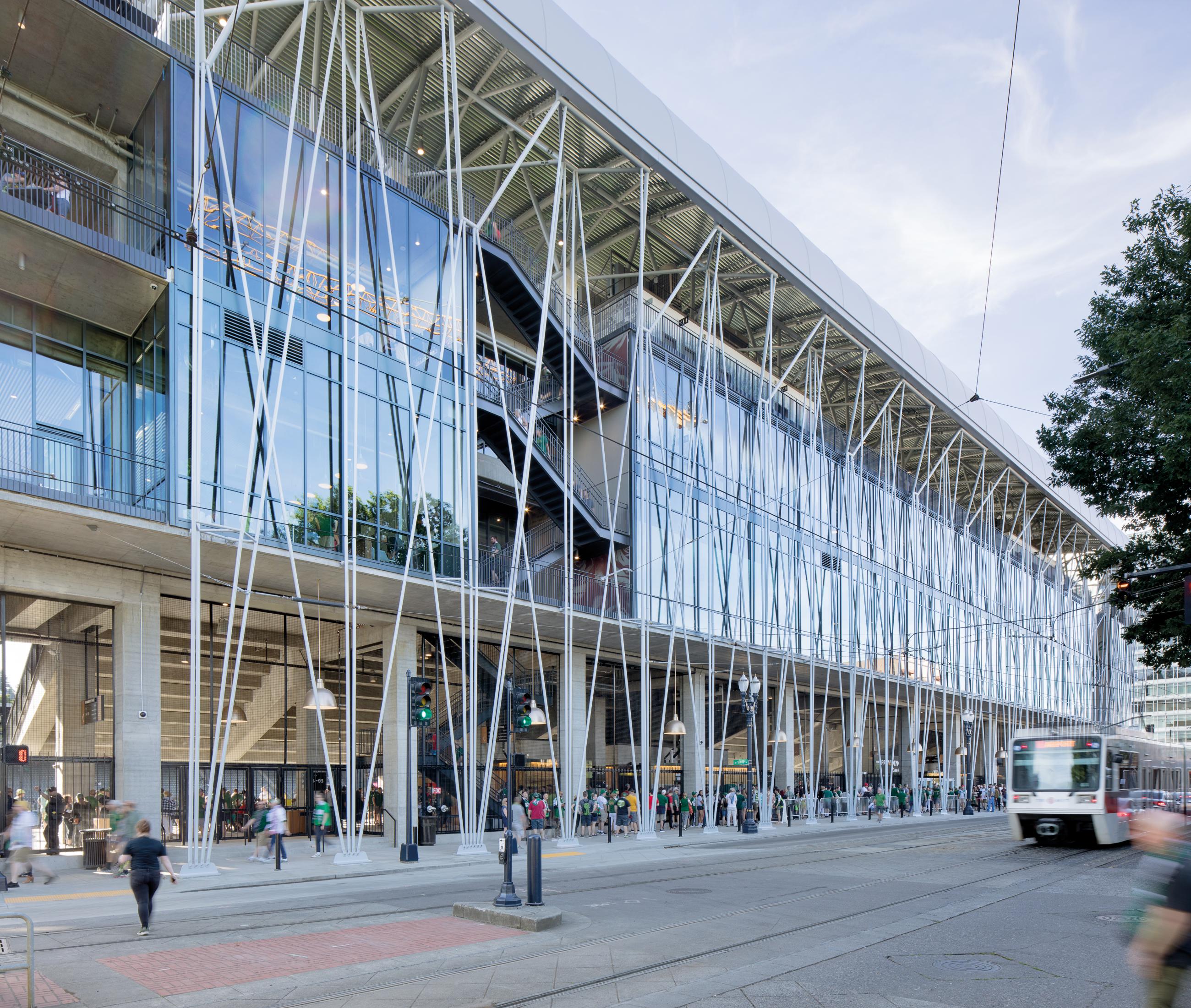
Jeremy Bittermann / JBSA
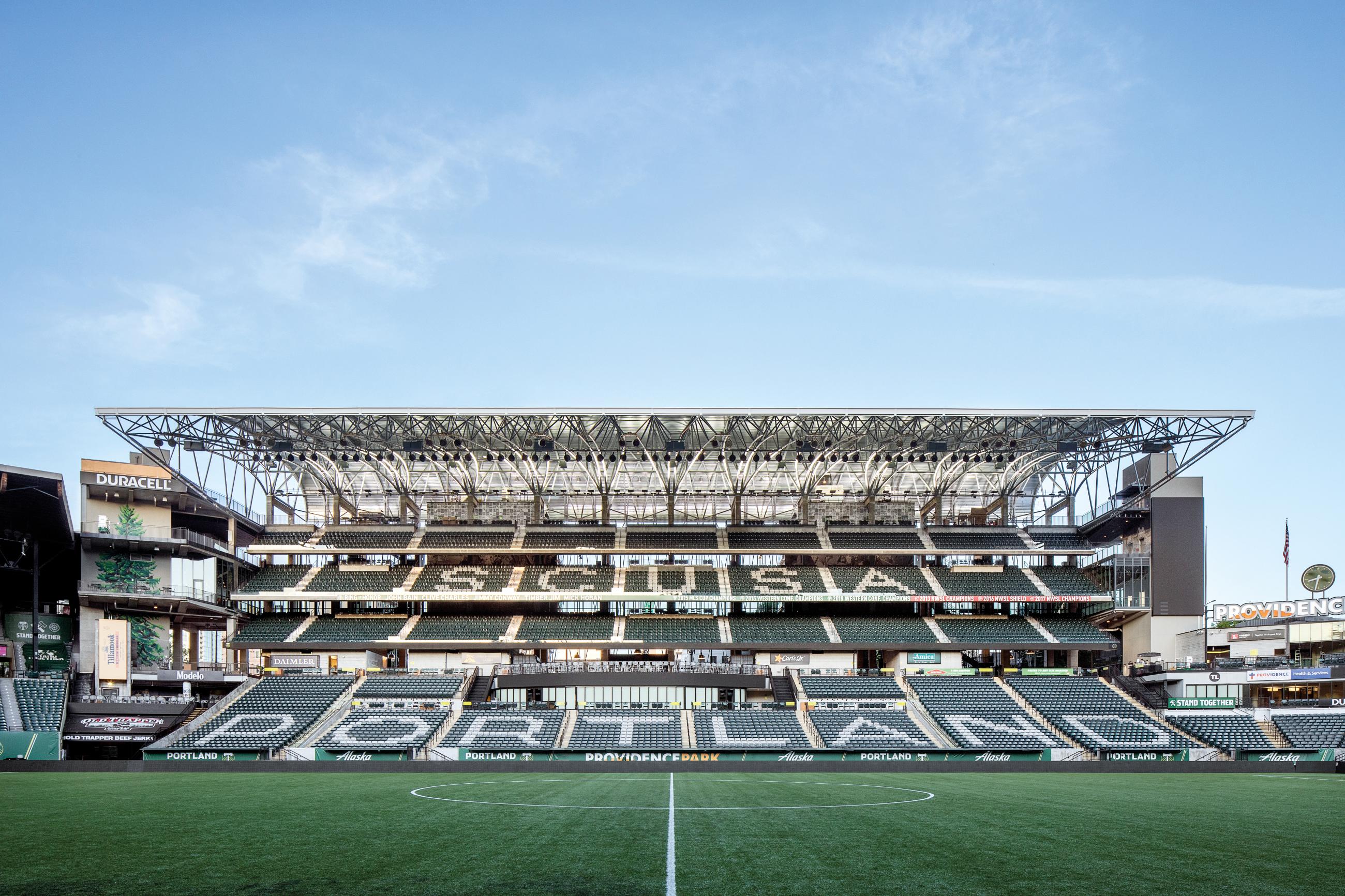
Jeremy Bittermann / JBSA
The expansion completes the vision for the original stadium while adding a distinctly modern, open and transparent new form. Composed of many elements and layers of history, the character and experience of the facility is wholly unique and distinctly Portland, creating one of the true “Cathedrals of Soccer” in all of North America.
While the original designs for the stadium envisioned a heavy, concrete arcade, Allied Works’ design reveals a structure of open steel lacework, revealing layers of people, light, and activity. A scrim of steel tension structure forms a textile-like façade for the expansion that rises three levels above the street. At the sidewalk, fans walk under a covered public passage the length of the stadium, with sight lines into the field along Southwest 18th Avenue. The first and second concourse levels are shielded in glass, and the open-air, third level concourse doubles as an event deck with panoramic views of the city, the West Hills, and the Cascade Range.
